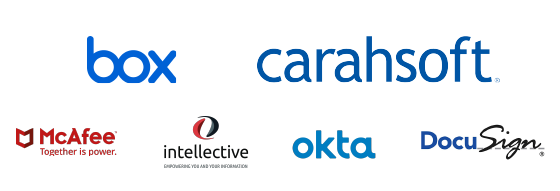At some point in our professional careers, we’ve likely all complained about outdated systems and processes that make our jobs harder. You know, the processes that we have used and will continue to use because we’ve always done things that way.
But allowing this type of mindset to fester at an agency comes with a high cost. Depending on the agency’s mission, it could mean declining citizen services, communication barriers between staff and wasted time, money and efforts.
These are among the challenges that agencies must confront as they embrace IT modernization and ensure that employees at all levels are heavily invested in those efforts. At GovLoop’s recent event, “Cloud Management at the Center of Government Modernization Excellence,” leaders from both federal and local governments shared practical tips on how they are pressing past barriers to IT modernization. This particular panel featured:
- Chris Tonjes, Chief Information Officer, Office of the Attorney General for the District of Columbia
- Dorothy Aronson, Chief Information Officer, National Science Foundation (NSF)
- Thomas Sasala, Director, Operations & Architecture, Headquarters, Department of the Army, Office of the Chief Information Officer and Chief Data Officer
- Renata Maziarz, Department of the Treasury, Product Owner, USASpending.gov, Bureau of the Fiscal Service
At NSF, Aronson said her team uses the small-steps approach to make incremental improvements and new investments, rather than throw money at aging systems. “We take the smallest possible step and gain momentum,” she said. Employees and leadership get excited about those achievements, which are clear demonstrations of success.
Aronson added that “getting the voices of the people” is one of the biggest challenges of IT modernization. “The same people who complain about the system need to help us understand what they need.”
To get their feedback, NSF often asks for volunteers, who are also potential users of the technology. This is a starting point to get them engaged and involved in driving change. To better understand users’ needs before implementing solutions across the agency, NSF devises a game plan for engaging with different types of users.
For example, there are people who want to change, people who will accept change and then those who do not want to accept change. “We attack each of those segments,” Aronson said.
The Treasury Department’s Bureau of the Fiscal Service is taking a similar approach. Maziarz noted that the agency is taking lessons learned from implementation of the 2014 Digital Accountability and Transparency (DATA) Act, which required the federal government to use a single data structure for spending data and make that information searchable and transparent. This effort required modernizing both technology and processes.
She shared three key lessons from that experience:
- Culture eats strategy for breakfast. For example, you have to go down to the level of the procurement person entering data into the system and help them understand how critical that data is and how it will be used to make decisions. “You have to get them to understand that to change the culture of how data is used.”
- Process and incremental progress. Tackle small things and show success along the way.
- Partner with IT. Show them the value of what the business is trying to accomplish by using data.
The panelists acknowledged that everyone is at different stages of IT modernization. As the CIO of D.C.’s Office of the Attorney General, Tonjes shared how the city addressed its infrastructure crisis.
He had a very narrow mandate to modernize the city’s method for managing cases and documents. His team literally had to strip everything down and start over. “We had to decide what to do for file service [and] management. There was a data center in [the] building that flooded several times and didn’t have redundant power or cooling.”
His team had to get the lawyers on board who would be using the new system because the old one was 15 years old and used obsolete technology. From an IT perspective, staff were encouraged to recommit to customer service or encouraged to learn it. Tonjes also encouraged people to set aside inefficient processes.
“It’s better for me to plant ideas in other people’s head and for them to come to the same conclusion,” he said of using indirect persuasion. “I planted seeds about modernizing the way operation runs, finance, HR, etc.”
For the Army, IT modernization is more nuanced and includes warfighting and intelligence gathering missions of the Defense Department. “For us, modernization comes in a number of forms,” Sasala said. There are advanced research and development, traditional IT modernization or continuous evolution, and modernizing business systems, such as HR.
Sasala touted cloud as a viable solution to assist in these areas. “I think we need to get more open-minded about adopting commercial cloud services,” he said. To determine what gets modernized and when, the Army considers more than two dozen factors, such as how critical the system is to the mission, how old it is, how much modernization will cost and what’s the cost and risk of keeping things the same.
To more effectively implement modernization, Sasala encouraged people in government to collaborate with each other and industry partners about current projects and how those efforts can complement each other.






Leave a Reply
You must be logged in to post a comment.